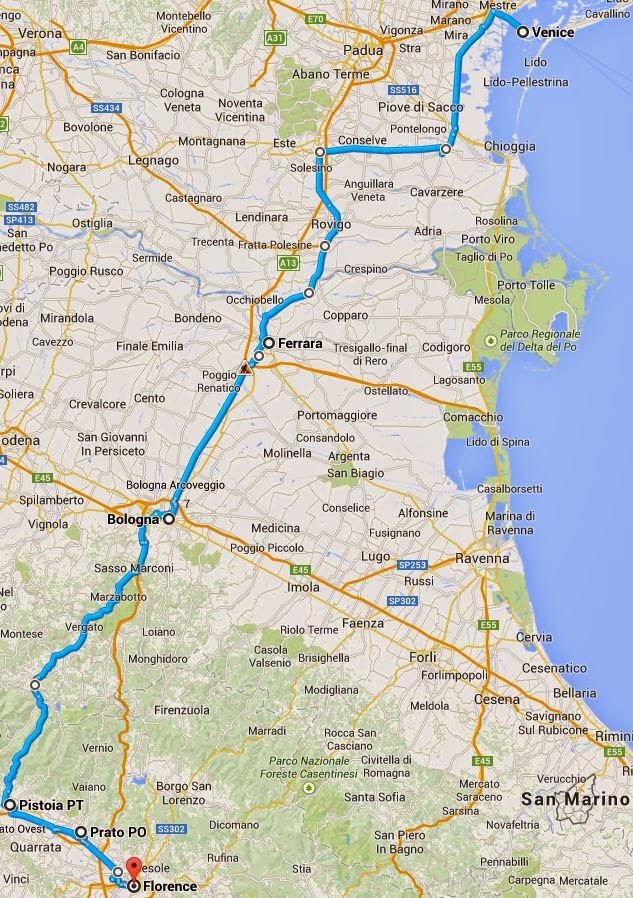From Mom's Europe trip diary, in the "PLACES VISITED" section:
* The Pontifical North American College is a Roman Catholic educational institution that opened in 1859 that trains priests, serves as a residence for American priests doing advanced studies in Rome, and (in 1953 and today) provides free tickets for papal audiences and other events.
** The American Catholic Club was originally established in July 1944 by the National Catholic Community Service to provide services for American and Allied soldiers. It was located on the Via della Conciliazione, just three blocks from St. Peter's Square .
*** According to the Pontifical North American College, Mom's crucifix was blessed, along with any other religious articles she had with her that day.
Here are a couple of photos Mom took at St. Peter's, plus two others of sights she saw that day that were taken in 1961 and 1982 respectively:
The obelisk in front of St. Peter's Basilica in the photo above is from Egypt (c. 2494 BC – 2345 BC) and was originally moved to Alexandria and then to the Circus of Nero in Rome in the first century AD. It was moved to its present site in 1586. Below is a close-up of the entry, with the statue of St. Peter to the left.
I'm sure Mom saw Michelangelo's Pietà, pictured above. The Sistine Chapel ceiling probably looked a lot like it does in the photograph below from 1982, just before it was restored.
This is the 54th in a series of posts transcribing entries in my mother's 1953 Europe Trip journal.
© Amanda Pape - 2014 - click here to e-mail me.
September 30, Wednesday – Rome
After breakfast went by North American College * and picked up ticket for audience with Pope. We then went to Vatican City -- bought some stamps, saw the Sistine Chapel, and the Vatican Museums. Only had about 1.5 hours so quickest trip on record. Saw St. Peter's (very beautiful inside with many side altars and beautiful ceilings and domes). Ate lunch at American Catholic Club. ** Came back to hotel and got ready to go to Castel Gandolfo (Pope's summer home). Rode a city bus out there and saw the Pope. He spoke in several different languages -- Italian, Spanish, French, English, and German -- but I couldn't understand English because of terrible loudspeaker system. He gave us a Papal blessing which I hope blessed my crucifix. *** Came back to Rome on a bus packed like a can of sardines. Tight squeeze. Went to opera and saw Cavilleria Rusticana and Pagliacci. Opera better than Met in that thing weren't so perfect. Both were wonderful. The only sour note to me was people on stage were obviously looking at man on box on stage. Music & voices were good.
* The Pontifical North American College is a Roman Catholic educational institution that opened in 1859 that trains priests, serves as a residence for American priests doing advanced studies in Rome, and (in 1953 and today) provides free tickets for papal audiences and other events.
** The American Catholic Club was originally established in July 1944 by the National Catholic Community Service to provide services for American and Allied soldiers. It was located on the Via della Conciliazione, just three blocks from St. Peter's Square .
*** According to the Pontifical North American College, Mom's crucifix was blessed, along with any other religious articles she had with her that day.
Here are a couple of photos Mom took at St. Peter's, plus two others of sights she saw that day that were taken in 1961 and 1982 respectively:
 |
| St. Peter's Basilica from St. Peter's Square, Rome, Italy, 30 September 1953 / Geraldine Guokas Pape / CC BY-NC-ND 4.0 |
 |
| Entry to St. Peter's, Rome, Italy, 30 September 1953 / Geraldine Guokas Pape / CC BY-NC-ND 4.0 |
 |
| Rome - Pietà in St. Peter's [22 February 1961] / Roger Wollstadt / CC BY-SA 2.0 |
 |
| Vatican City 1982.03.18 [Sistine Chapel, before restoration] / Michael E. Johnston / CC BY-NC 2.0 |
This is the 54th in a series of posts transcribing entries in my mother's 1953 Europe Trip journal.
© Amanda Pape - 2014 - click here to e-mail me.





























_-_The_Last_Supper_(1495-1498).jpg)


